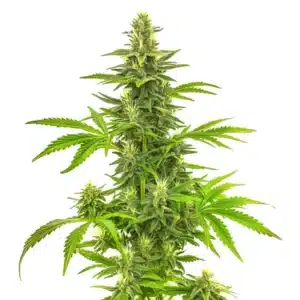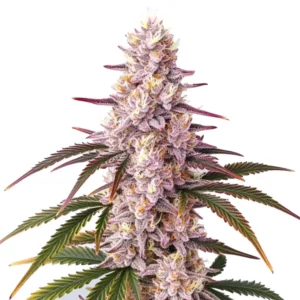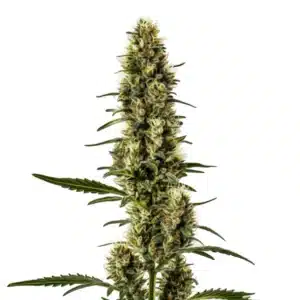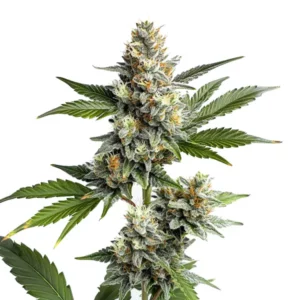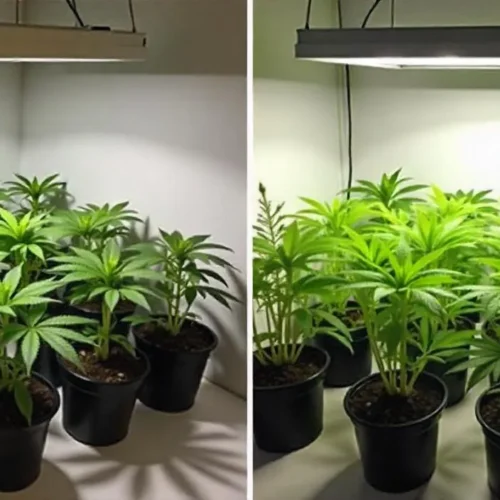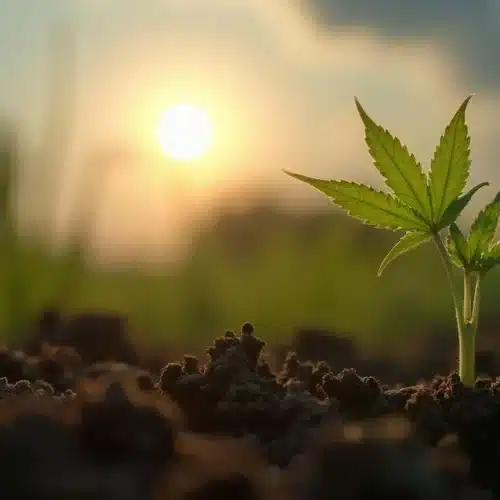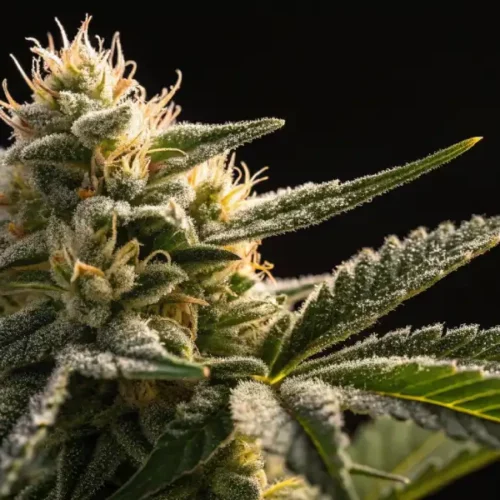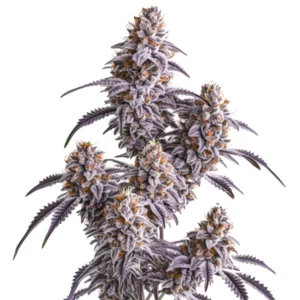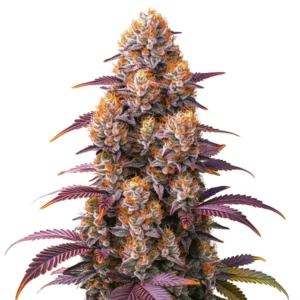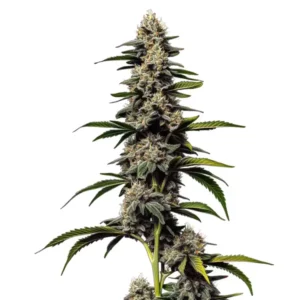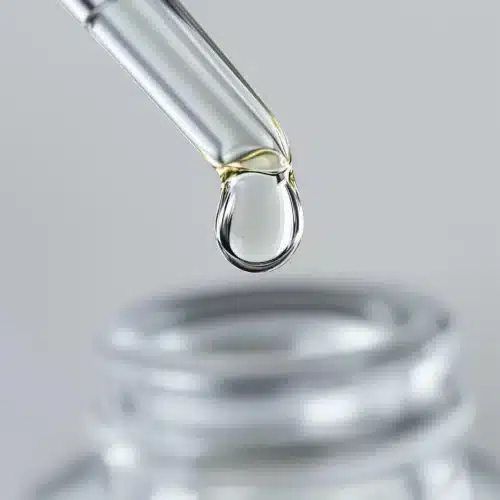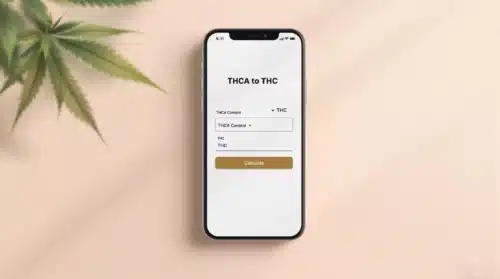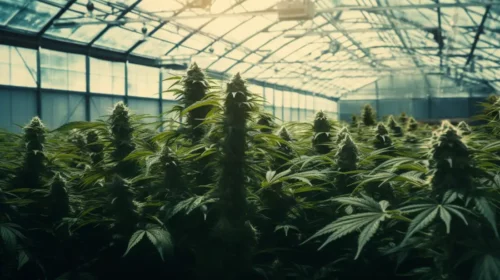Cannabis growers know that perfecting the grow tent environment is key to healthy plants and strong yields. One of the most frustrating problems many face is low humidity leaf curl. This sneaky issue can cause your cannabis plants’ leaves to curl and twist, signaling that something is off. It’s not just an aesthetic problem; it directly affects your plants’ health, leading to stunted growth and lower-quality buds. In this article, we’ll dive deep into what causes low humidity leaf curl, how to prevent it, and how to treat it to keep your plants thriving.
Low Humidity Leaf Curl in Cannabis Plants
What Causes Low Humidity Leaf Curl?
Low humidity leaf curl is a direct response from cannabis plants to environmental stress. Monitoring cannabis plant humidity helps detect early signs of stress and improves plant response. When the air in your grow tent is too dry, your plants can’t absorb enough moisture through their leaves. They respond by curling their leaves inward, attempting to conserve water. It’s the plant’s way of protecting itself, but ultimately, this is a sign of distress that needs your immediate attention.
The most common causes of low humidity include insufficient watering practices, excessive ventilation, or inadequate humidification. Grow tents with strong airflow may inadvertently dry out the plants, creating an environment where moisture is stripped away from the leaves faster than the plant can absorb it. High temperatures from grow lights can also speed up evaporation, making it challenging to keep humidity levels in check.
Not all strains are equally affected by low humidity. Some, like indica-dominant strains, thrive in slightly higher humidity, while sativa strains may be more resistant to drier conditions. However, all cannabis plants can show signs of low humidity leaf curl when environmental conditions are less than ideal.
Signs of Low Humidity Leaf Curl in Your Grow Tent
Identifying low humidity leaf curl is critical to prevent further damage to your cannabis plants. The most noticeable sign is the curling of leaves along the edges. The leaves may also appear dry, brittle, and lighter in color, losing the vibrant green that indicates health. In severe cases, you may see the tips of the leaves becoming brown or crispy.
One telltale sign of low humidity leaf curl is that the curling often starts from the top of the plant, where conditions are usually the driest due to the heat from grow lights. The leaves at the top of the plant are often closer to the light and receive the brunt of the heat, making them the first to show signs of distress. By recognizing these early warning signs, you can make timely adjustments to your grow tent environment to help your cannabis recover.
How Low Humidity Affects Cannabis Growth
The impact of low humidity leaf curl extends beyond just leaf appearance. When your cannabis plants are stressed from low humidity, their growth can become stunted. Low moisture levels make it difficult for the plant to engage in proper photosynthesis. Without enough moisture, the stomata, the tiny openings on leaves responsible for gas exchange, start to close, which restricts CO2 intake. This directly affects the plant’s ability to produce energy, slowing growth and reducing yield.
Another consequence of low humidity is poor nutrient absorption. Weed plant humidity that drops too low can also interfere with nutrient transport. Cannabis roots pull up nutrients with the help of water. When there’s not enough water available, nutrient uptake slows down, leading to deficiencies. This combination of factors results in weak, underdeveloped plants that can’t reach their full potential. Therefore, addressing low humidity leaf curl promptly not only helps restore the look of your plants but also ensures their long-term health and productivity.
Low humidity also affects the overall resilience of the plant. Plants weakened by a lack of moisture become more susceptible to pests and diseases. In a stressful environment, the natural defenses of cannabis plants are compromised, leaving them vulnerable to infestations such as spider mites or diseases like powdery mildew. Ensuring adequate humidity not only aids growth but also strengthens the plants’ natural defense mechanisms.

Promos & Deals
How to Prevent and Treat Low Humidity Leaf Curl
Adjusting Humidity Levels to Prevent Leaf Curl
Preventing low humidity leaf curl starts with maintaining consistent and adequate humidity levels. Cannabis plants in different growth stages have different humidity requirements. During the seedling stage, humidity levels should be around 65-70%. As your plants enter the vegetative stage, they still need higher humidity, usually between 50-60%. Once the flowering stage begins, humidity levels can be reduced to around 40-50% to prevent mold.
A hygrometer is an essential tool for monitoring humidity levels inside your grow tent. If you notice the levels dropping below the ideal range, you can use a humidifier to bring it back up and stabilize low humidity levels before they affect plant health. Another simple fix is to decrease ventilation or airflow if it’s overly strong. Finding the right balance between ventilation and humidity can make all the difference in preventing low humidity leaf curl.
In addition to adjusting the overall humidity, ensure that your plants receive proper watering. If the soil is too dry, the roots will struggle to absorb the water they need, which ultimately affects the leaves as well. Remember, proper root hydration is key to maintaining leaf health, especially in low humidity environments.
Another key strategy is using wet/dry cycles effectively. Allowing the soil to dry slightly before watering again encourages the roots to seek moisture, which strengthens them. However, in a low humidity environment, you need to be cautious not to let the soil dry out too much, as this can worsen leaf curl.
DIY Solutions for Raising Humidity
For growers looking to save money or just enjoy the satisfaction of solving a problem creatively, DIY solutions can be very effective for addressing low humidity leaf curl. One quick method to raise humidity is to hang wet towels around your grow tent. As the towels dry, they release moisture into the air, increasing the overall humidity. Another simple trick is placing bowls of water around your grow tent. These bowls act as natural humidifiers as the water evaporates over time.
A more advanced DIY project is creating a homemade humidifier using a bucket, a fan, and a towel. Fill the bucket with water, drape a towel over the side so one end is in the water, and position a small fan to blow across the towel. This setup allows the towel to wick water up from the bucket, and the fan helps distribute moisture into the air. These low-cost solutions can help prevent low humidity leaf curl without the need to invest in expensive equipment.
You can also consider creating a pebble tray. Fill a shallow tray with pebbles and add water until it just reaches the top of the pebbles. Place your plants on top of the tray. As the water evaporates, it will add humidity to the air surrounding your plants. This method works well for smaller grow spaces and is easy to maintain.
Gradual Humidity Increase for Treating Leaf Curl
When dealing with low humidity leaf curl, many growers make the mistake of overcompensating by adding too much humidity all at once. Sudden spikes in humidity can shock your plants, leading to additional stress. It’s important to increase humidity gradually to let your plants adapt to the changing conditions. Rapid changes in the environment can cause as much damage as the low humidity itself.
Another mistake to avoid is overlooking other environmental factors. While low humidity is often the primary cause of leaf curl, temperature and lighting also play crucial roles. If temperatures are too high, it can compound the effects of low humidity. Always aim to create a stable, balanced environment where all conditions, light, temperature, and humidity, are optimized for your cannabis plants.
In some cases, repositioning your lights can also help alleviate the effects of low humidity. Lights that are too close to the plants can increase leaf surface temperatures and exacerbate moisture loss. By raising the lights slightly or adjusting their intensity, you can help reduce the stress on your plants, making it easier to maintain the right humidity balance.
Long-Term Effects of Low Humidity Leaf Curl
Impact on Bud Quality and Yield
If low humidity leaf curl is left untreated, the long-term impact on your cannabis plants can be significant. One of the most critical areas affected is bud development. Cannabis buds need consistent humidity to develop properly. If the plant is under constant stress from low humidity, the buds may be smaller, less dense, and less potent. Trichome production, which directly affects the potency and flavor of your cannabis, can also be hindered by low humidity conditions.
Cannabis growers invest a lot of time and effort into achieving a strong yield, and low humidity leaf curl can undermine those efforts. The buds from stressed plants often have fewer terpenes, resulting in a less aromatic product. The overall weight of the yield can also be reduced, which is disappointing for any grower aiming for a rich harvest. To avoid these negative consequences, it’s important to recognize and treat low humidity issues as early as possible.
Quality and Potency Concerns
Bud quality is not only about the yield; it also concerns the potency and flavor profile of the final product. Low humidity can directly impact the development of cannabinoids and terpenes, compounds that give cannabis its unique effects and aromas. Plants that suffer from low humidity leaf curl often produce buds with a lower concentration of these valuable compounds. As a result, the final product may be less effective medicinally or less enjoyable recreationally.
Furthermore, the overall appearance of the buds is affected. The aesthetic of dense, frosty buds can be compromised when plants struggle with humidity issues. Consumers often equate the visual quality of buds with their potency, so ensuring your cannabis is visually appealing is also a part of maintaining market value if you are growing commercially.
Recovery Tips for Affected Plants
If your cannabis plants are already showing signs of low humidity leaf curl, it’s not too late to help them recover. Start by adjusting the environment to raise the humidity gradually until it reaches the desired level. Prune any heavily damaged leaves that are no longer serving the plant, this helps redirect the plant’s energy to healthier leaves and new growth.
Keep an eye on the soil moisture as well, ensuring that the roots have access to adequate water. You might also consider using a foliar spray to give your plants a boost. Foliar feeding allows the plant to absorb nutrients directly through the leaves, which can help counteract the effects of nutrient deficiencies caused by low humidity. However, be cautious with foliar sprays during the flowering stage to avoid mold formation.
Another recovery tactic is to use humidity domes over particularly stressed plants. Humidity domes can help recreate a high-humidity environment around individual plants, aiding in their recovery without affecting the entire grow tent. This method is particularly useful for young plants and clones that are most vulnerable to humidity-related stress.
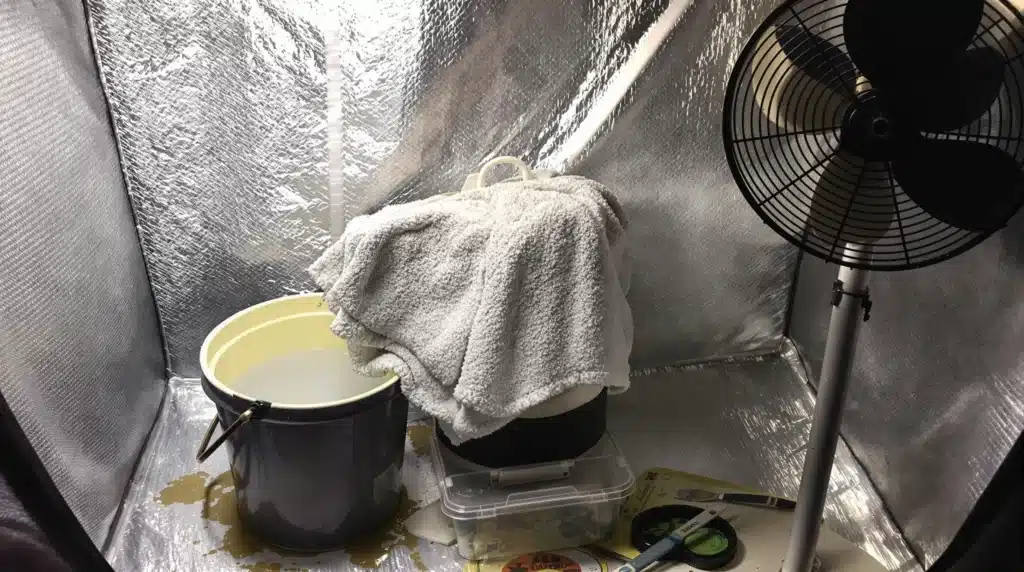
Identifying Low Humidity Issues in Your Grow Tent
How to Recognize Low Humidity Stress Early
Recognizing low humidity leaf curl early on is key to preventing more severe issues. The first sign is often a slight curling or cupping of the leaves along the edges. Leaves may also appear drier than usual, and you may notice that new growth is affected before older leaves. If the humidity level remains low, the entire plant can begin to look unhealthy and struggle to keep up with normal growth rates.
Another early indicator of low humidity stress is a slow rate of transpiration. Transpiration is the process by which plants release water vapor through their leaves. If your plant is not releasing moisture at a healthy rate, it’s likely due to insufficient ambient humidity. Using a hygrometer to track your grow tent’s humidity levels and correlating that data with the health of your plants can help you identify when low humidity leaf curl is starting to take hold.
Tools to Monitor Humidity and Detect Problems
The best way to prevent low humidity leaf curl is to closely monitor your grow tent’s environment using the right tools. A reliable hygrometer is an essential device for this purpose. It provides real-time readings of the humidity in your grow tent, allowing you to make adjustments before issues arise. Some hygrometers also track historical data, which helps you understand fluctuations throughout the day and night.
Another helpful tool is a digital thermometer with humidity monitoring features. Many of these devices are capable of providing alerts when humidity falls outside of the desired range, enabling you to take swift action. By pairing these tools with visual checks of your plants, you can stay ahead of any environmental changes that may lead to low humidity leaf curl.
Consider using a temperature and humidity controller. These devices can automate adjustments to your grow tent, helping you keep your environment stable without constant manual intervention. They can be particularly helpful for those growing multiple strains, each with slightly different needs, as they help you maintain the best average conditions for all plants.
Differences Between Low Humidity Leaf Curl and Overwatering Symptoms
It’s important not to confuse low humidity leaf curl with symptoms of overwatering. While both issues can cause curling leaves, overwatering often leads to leaves that are dark green and feel heavy, while low humidity tends to make leaves curl inward and feel dry or crispy. Overwatering also affects the lower parts of the plant first, whereas low humidity symptoms often start at the top, where the air is driest.
If you’re unsure whether your plant’s curling is due to low humidity or overwatering, pay attention to how the leaves feel. Brittle, crispy leaves are usually a sign of low humidity, whereas limp or drooping leaves point towards overwatering. Correctly diagnosing the problem is crucial because treating one issue as if it were the other can further harm your.
FAQs
What are the main signs of low humidity leaf curl in cannabis plants?
The most common signs include leaf edges curling inward, dry or brittle leaf texture, and discoloration—often starting from the top of the plant. These symptoms indicate that your plant is trying to conserve moisture due to an overly dry environment.
How can I prevent low humidity leaf curl in my grow tent?
To prevent leaf curl, maintain proper humidity levels based on the plant’s growth stage, use a hygrometer to monitor conditions, and adjust ventilation or add humidifiers as needed. Also, avoid letting soil dry out completely and consider using DIY humidity-boosting methods like wet towels or water bowls.
Can cannabis plants recover from low humidity leaf curl?
Yes, with the right environmental adjustments, plants can bounce back. Gradually increase humidity, prune damaged leaves, maintain consistent watering, and use tools like humidity domes or foliar sprays (with care) to support recovery and restore healthy growth.

